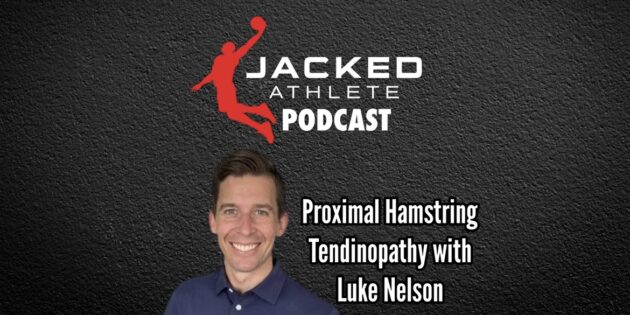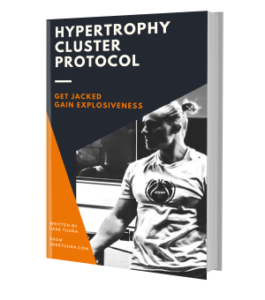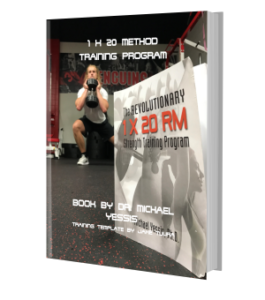https://podcasts.apple.com/us/podcast/jacked-athlete-podcast/id1462537296?i=1000705708620
PHT: “We always talk about tendinopathy taking its time, but that probably took a good four or five months to really get that under control. didn’t impact, thankfully didn’t really impact my running. I had to modify things slightly, but I was still able to run quite well, but there was just this awareness there and ⁓ difficulty sitting down.”
PHT: “I’ve always said with hamstring tendinopathy and having seen a lot of it over the years, that it’s probably the one tendinopathy that I didn’t want to get just because I’ve seen how much people suffer with it because it’s one of these things that doesn’t only impact you athletically, but it’s day to day life. It’s putting your pants on, it’s bending forward to tie your shoelaces, it’s sitting.”
“At slower running speeds like jogging, the demand on the hamstrings is, you know, 2 times body weight, whereas, your calf is upwards of 6 at that slow running speed. So it’s really only until you get to sprinting does that demand go up to, you know, up to 9 times body weight.”
“So it is one that firstly we can see it in sprinters but I think with the running it’s even though it’s a lower demand it’s just the number of loading cycles you know it’s 500 steps per kilometer. Even though it’s not that the high demand it’s just doing it over and over and over again, and often on a daily basis, ⁓ and sometimes twice a day, if they’re doing double runs. So I think that’s sort of a question I’ve asked myself as well, because it’s not per step, it’s not the demand that we see in sprinting and high speed running, but they’re just doing so much of it.”
“How that tendon attaches and wraps around the issue of tuberosity out into the buttock there, it is susceptible to compression, much like the insertional Achilles is.”
“So if you’re getting a lot of hip flexion, which we see in high speed running, and then combine that with a lot of force, you can get a sudden, essentially a sudden tugging compression. And sometimes if that’s powerful enough, and there’s maybe some other preceding things going on through there and that individual, that, you know, that that sudden one-off, it may be enough to sort of set it off and you get this reactive, you know, that reactive tendinopathy versus the distance runner where it’s just a small tug bit by bit by bit by bit and again combined with some other things then that does accumulate over time.”
“I don’t like to use overuse because it sort of implies that in terms of then rehabbing it, it’s like if I’m saying to someone, you’ve overused it, then they’re like, well, then I just need to use it less. Whereas if I talk about overload, then we can sort of talk about manipulating the load and also building capacity around that. So it might seem a bit semantics, but I prefer the term overload versus overuse just to, I guess, get in the head of the patient so that they understand that rehab and load management becomes a really important factor in managing these.”
“The location of the pain, it’s a little different, usually with patellar tendinopathy and Achilles tendinopathy, we usually say it’s quite pinpoint pain. They can often point to it with one finger, and if it’s not that, it’s likely something else. With hamstring tendinopathy, it can blur a little bit. They can actually get some pain going down into the posterior thigh or coming up into the buttock there.”
“I saw this during our lockdown here. We had some very restrictive lockdowns here in Melbourne, think, fortunately, during COVID, one of the most restrictive in the world. But I actually saw this happen in sedentary people. I had a few patients come in that developed this just from sitting on their butt too much in that lockdown time.”
“Standing desks are thankfully becoming more popular these days. So getting them standing more, so getting them actually off their buttock… the other option we’ve got to, so standing desks is actually just cushioning.”
“And then sort of even even leaning like can make a difference too as well too, because unfortunately sort of being more upright that does put you directly on the ischial tuberosity where that does attach. So sometimes actually going into a more slouched position so leaning back is actually better for you because you’re sitting more on your glutes rather than on the ischial tuberosity.”
“Firstly, reduce the intensity, because we know that as soon as the speed goes up, so does the demand on a hamstring. So if we can back off some intensity, try and keep the running a bit flatter, because we know that elevation also puts more demand… If we need to then dial back the volume and reduce their distances, then that’s also something we do.”
“This is probably something that I’ve changed in my approach over the last few years now being exposed to the Berlin group with the shorter hold isometrics to improve tendon stiffness. I do use those in my rehab and pretty much the protocol that as they use in with theirs with a shorter duration. And I will usually opt to do that in a hamstring curl.”
“So I think that hamstring curls do form a pretty staple part of a hamstring tendinopathy rehab… twice a week on the ISOs to improve stiffness there.”
“I like to get my runners lifting heavy. looking at ⁓ introducing deadlifts and squats. But the thing that we will need to modify with that is the range initially. So lifting off the floor for deadlifts will often be bit provocative. So we might put them on blocks or do some rack pulls through there. Then progressing the range as they get better and to be lifting off the floor. And then with our squats again, opting for more front squats, which are a little bit more sort of anterior chain and quad dominant, but we’ve got more vertical trunk there. And then progressing them onto back squats and getting more trunk flexion.”
“Nordics and also hip extension exercises. And what she found is that they are good for, I mean, you’re obviously improving fascic length in the hamstrings and getting hypertrophy in the hamstrings, but it doesn’t do a lot actually for the tendon and for the aponeurosis. So for the intramuscular tendon and the free tendon. So it’s actually not the best exercise to improve that.”
Flare ups: “Often we don’t need to change anything. It’s more like, all right, let’s just ride this one, ride this one through, you know, repeat the same session or what have you, you know, that following day and things go back down. And that’s like a lot of the flare ups will do that.”
“So firstly, there’s looking at trunk position, so an increased forward lean that will put more work in through that posterior chain. So I look at that to make sure they’re not flexing forward. And often you do see when runners fatigue, especially more recreational runners, they do tend to, as they fatigue, they do tend to flex more forward. And so that can put more strain up and through there.”
“The other component we’re looking at too is looking for over stride. So that’s where their foot is landing, initial contact is more forward of their center of mass. So if you think of that, mean, that, that again results in a, in an increased hip flexion range. And if you combine that over stride with an increased forward trunk flexion, and that does sort of a bit of a double whammy on that, on that proximal, proximal tendon.”
“When I’m dealing with this with gym athletes and also runners, you can control, you can pretty much control everything. You can control the weight, you control the reps, you can control the volume, everything. Whereas in field sports, it’s a lot harder. You know, you’ve got and anticipated movements you’ve got you don’t know exactly the distances they’re going to be doing their high-speed efforts they’re going to be doing in the game. So it is a lot harder to control in that regard. You can control their training during the week so you can sort of limit them and say, we’re only going to do this much volume during the week but when it comes to a match situation and they’re playing it’s difficult.”
Luke on Instagram: https://www.instagram.com/sportschiroluke/?hl=en
Luke on Twitter: https://x.com/SportsChiroLuke
Website: https://www.healthhp.com.au



